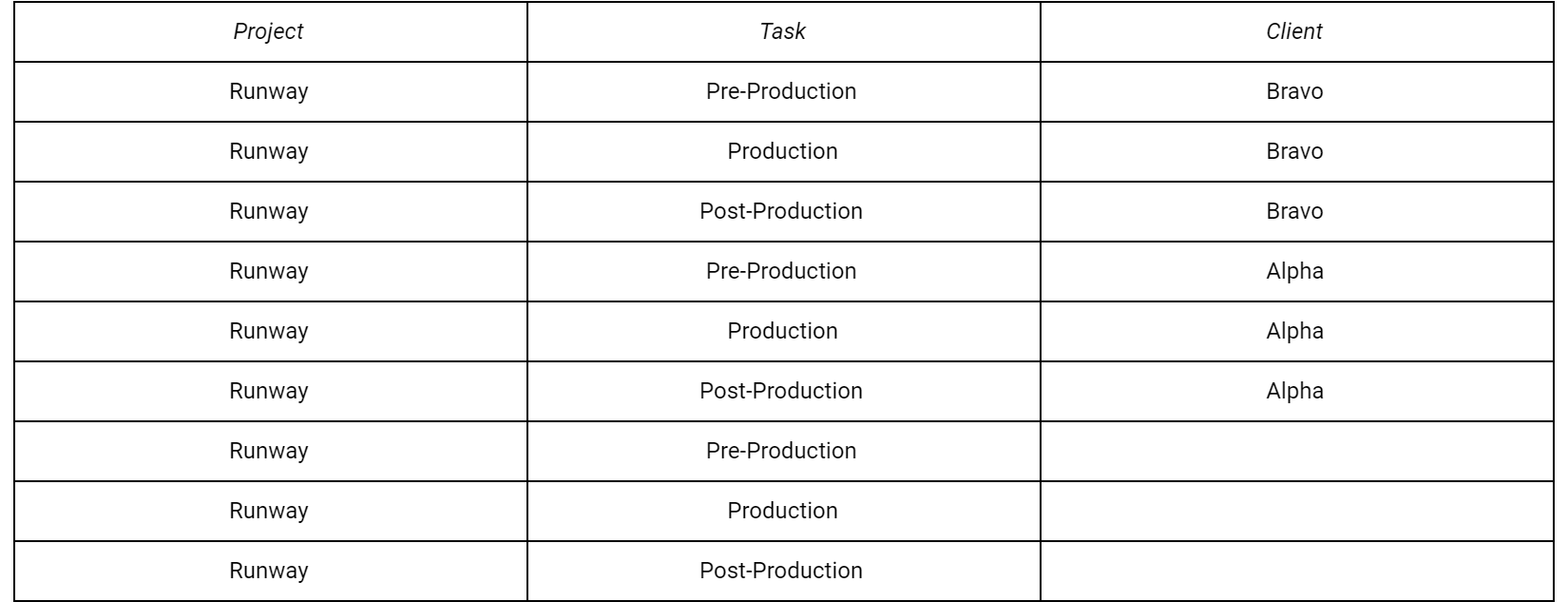Toggl Track CSV Import Guide
Use our web app’s CSV importer to set up your team’s Toggl Track workspace.
Admins can use the CSV importer to bring in existing time entries, projects, clients, tasks, and tags in bulk, instead of creating them one-by-one.
In this guide:
Before you begin
The key to making this a simple process is to format the CSV correctly. For more information on formatting tips, read this guide first.
While you can import users via CSV, as well as import time entries in the process, you can start by adding all users to your workspace if you wish. Here’s how to invite teammates in the app. Invitees become active users once they accept your invitation.
To see who hasn’t accepted their invitations into your workspace yet, go to the Team page, and set the Show dropdown to Inactive.

To invite users via CSV, you need an Email column only. Like so:
You can also include a User column, containing the names of each user:
|
|
User |
|
Rico Mossesgeld |
|
|
Dwight Eisenhower |
|
|
Arthur Tedder |
|
|
Bernard Montgomery |
|
|
Trafford Leigh-Mallory |
|
|
Bertram Ramsay |
If the imported user already has a Toggl Track account for that email address, whatever name they've set will be used.
Remember to use comma-separated CSVs with UTF-8 encoding. The importer will try to create items on Toggl Track, based on the CSV you use. Please also note that our imports are case sensitive, so Acme and acme will be created as two separate items.
Users imported as active users via CSV will be included in your subscription plan. You cannot import time entries for inactive users.
Importing Time Entries
To import time entries, use a CSV with these columns:

This CSV would create 5 time entries for the user rico@toggl.com:

Note:
-
Time entries with identical email, description, project, task, client, tags and billable status will be considered unique only if the start date/time stamp is different. Time entries with all data, including start date/time, being identical will be merged.
-
When importing time entries, the end date and end time are ignored. These are calculated automatically by the importer, based on the start time and duration.
-
As the Billable column indicates if a time entry is billable or not, the three acceptable formats are y or n, yes or no, 1 or 0.
-
If you are re-importing a Track Detailed Report, please make sure your Profile has the Duration format set to Improved before you export the report.
Importing Projects (and Tasks)
Here are the CSV columns to use:

Each Task must be one row. For example, if you wanted to import…
-
A project called “Runway”...
-
under the “Bravo” client...
-
with three tasks named “Pre-Production”, “Production”, and “Post-Production”...
Here’s how the CSV would look like:

You can have projects with the same name, if they have different clients (including not having a client):

Note: Tasks can only be imported on Paid plans. Please note, all new projects are private by default.
Importing Clients or Tags
For clients or tags, just use a one-column CSV:

Importing Project Assignees
Say you had an existing project called “Overlord”. Its client is “The Alliance”. You’d like to assign these teammates to the project:
Here’s the CSV you would use:

When importing users via CSV:
-
Ticking the option to invite new users will make them active or invited users. This is chosen by default.
-
Not ticking this option will make them inactive users. Inactive users can be seen on the Team page under the Inactive filter.
Important:
Please only uncheck the invite option if you are sure this user will never need to use Track in the future as a user made Inactive when importing cannot be reactivated at a later stage.
Additionally, two fields (one each for projects and clients) can be imported for use but are not exposed in the UI. They are meant for use with the API. These are:
-
Client External Reference
-
Project External Reference